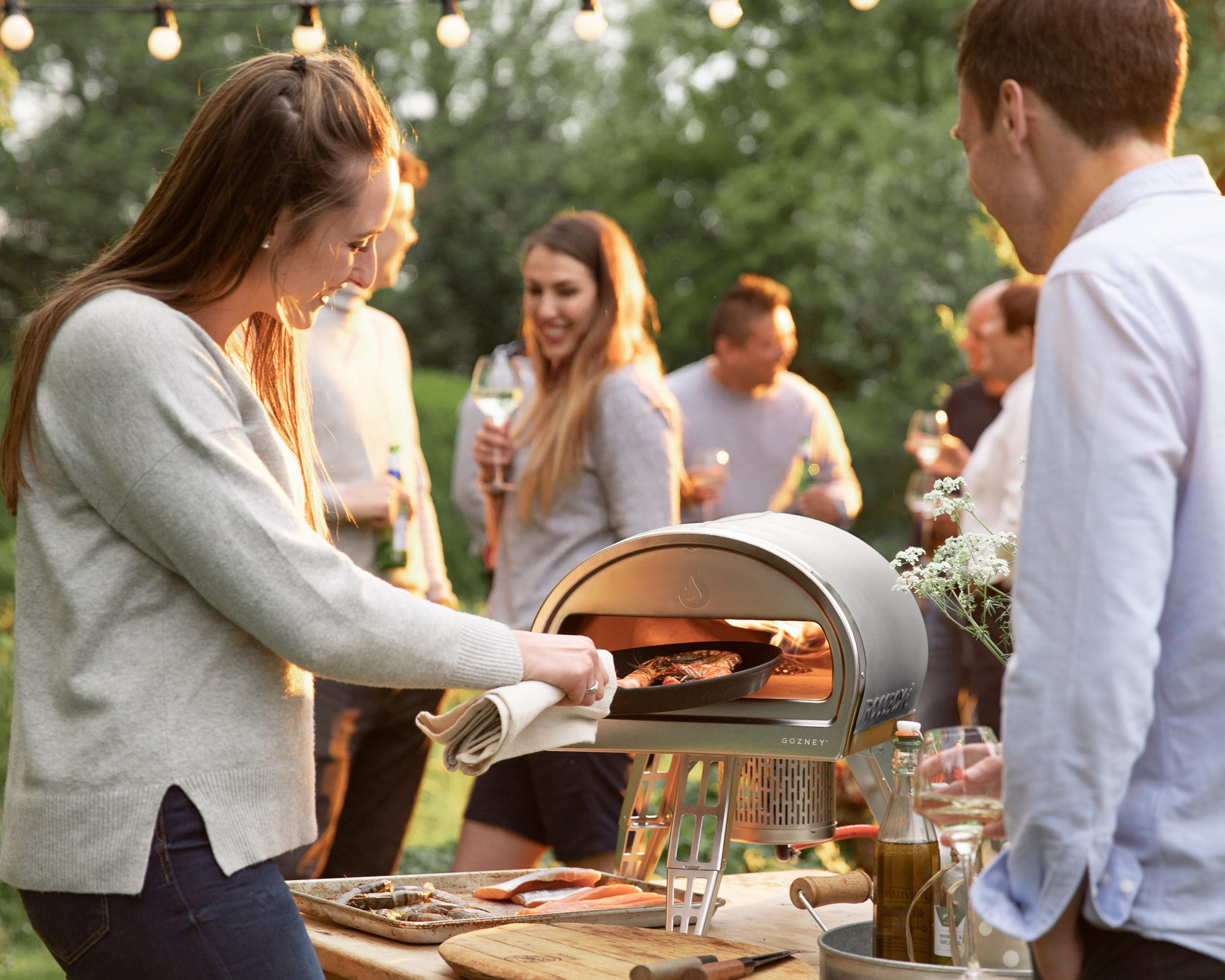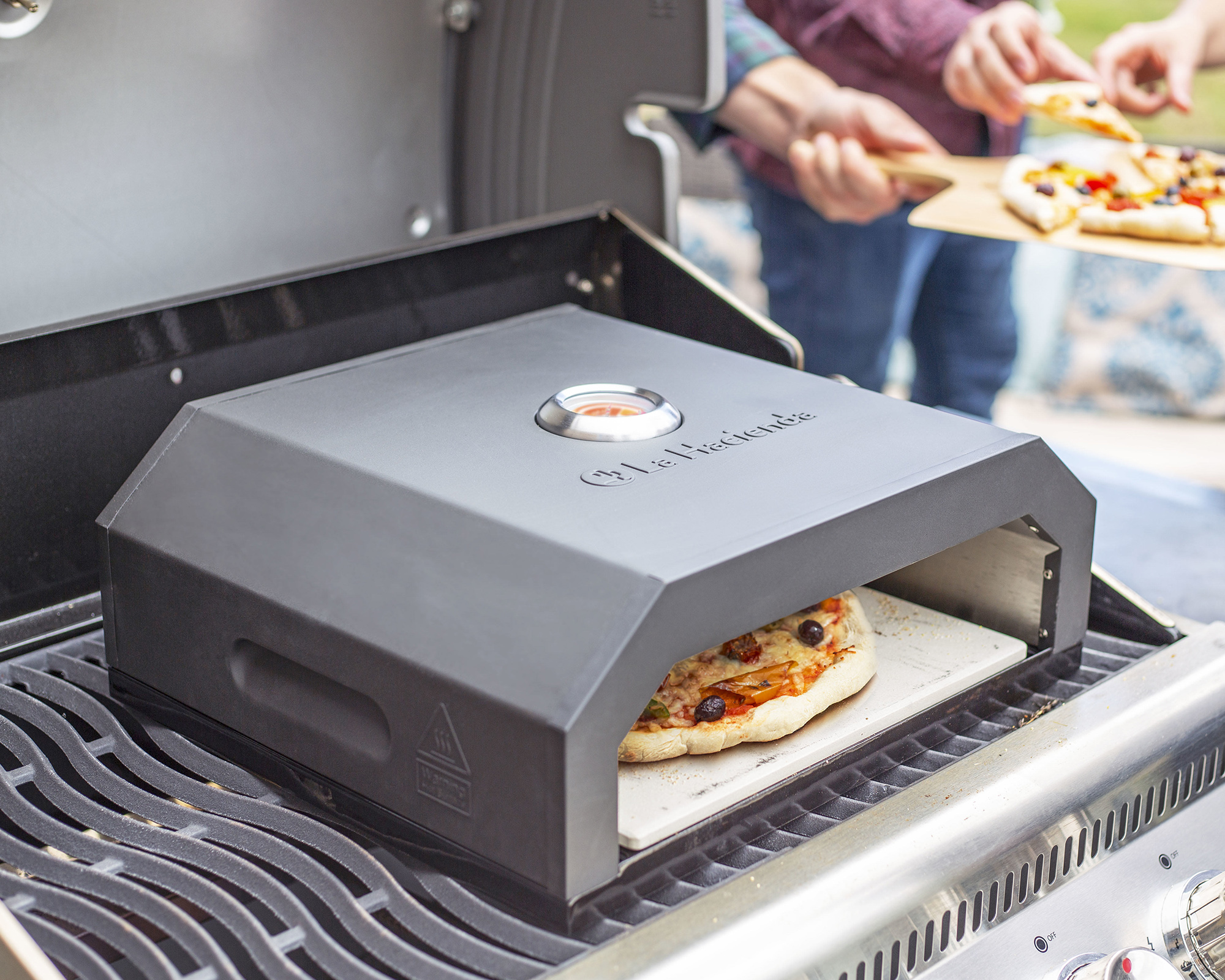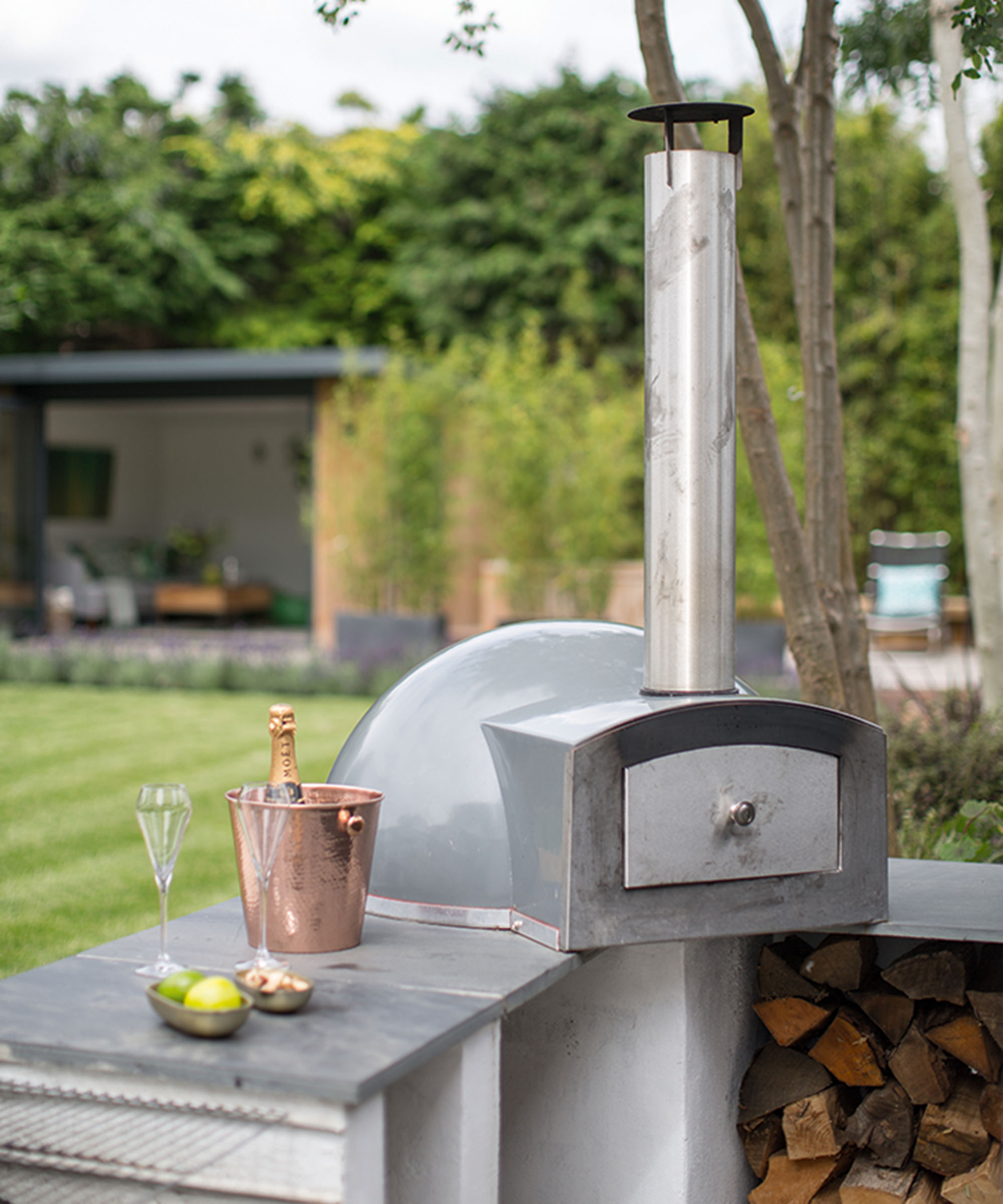Are pizza ovens worth it and how much do they cost?
If you're wondering are pizza ovens worth it, we've got all the information you need to help you decide if this alfresco cooking gadget is right for you


If you've been asking 'are pizza ovens worth it' chances are you've been considering investing in one of these on-trend outdoor accessories. After all, if there’s one piece of garden kit that has seen huge sales growth in recent years, it’s a pizza oven. They're so much more sociable than a barbecue and with virtually instant results, and they’re a guaranteed hit with people of all ages. Seriously though, who doesn’t like pizza?
Aside from the obvious, the reason behind their recent popularity can be attributed to the fact that the best pizza ovens are so much more widely available now. Even up to a decade ago, the only domestic pizza oven you could get was a permanent wood-fired pizza oven - the kind you see in proper pizzerias. Aside from the space you’d need to house one of those in your garden, they can set you back thousands.
Nowadays, you can buy pizza ovens in all shapes and sizes, and in a wide variety of colors, too. They can be fuelled by solid wood, gas, wood pellets or charcoal. You can choose a permanent pizza oven or a portable model. The options, as with the toppings, are wide ranging and it might seem overwhelming, before you've even found out the answer to the burning question, are pizza ovens worth it?

Are pizza ovens worth it? Find out with our guide
The lure of a pizza oven is obvious. As we’ve already touched on, virtually everyone likes pizza. It’s super inclusive – you can cater for those with allergies and intolerances using gluten-and dairy-free ingredients, as well as tailor the toppings to suit everyone’s tastes. Pizzas are inherently fun, too. They’re the ultimate finger food and are enjoyed by the smallest of kids to the oldest of adults.
Aside from the initial outlay, a pizza oven is inexpensive to run and pizza is extremely cheap to make, too. So if you’re feeding a crowd, there really is no dish better suited. And it's fairly easy to learn how to use a pizza oven.

How much does a pizza oven cost?
'Prices range significantly from roughly the $200/£150 mark to into the thousands depending on the size, quality and type you are looking for,' says Tom Gozney, founder of Gozney.
There are wood-fired options which don't need gas or electricity. 'Pizza ovens offer a great way to cut energy costs, as instead of using electricity or gas, you use only wood to produce the heat necessary to cook your food,' says Vicky Naylor, General Manager, ACR Stoves. 'They are also a great back up in the event of your indoor oven not working or in a power cut, you still have a way to cook a hot meal.'
Other types of pizza ovens will be more expensive depending on a few key factors. According to Ooni's oven comparison, generally speaking the larger the pizza oven and the higher the wattage, the more expensive the model. The cheapest option being a wood pellet pizza oven.
Then there are the additional costs of the pizza oven accessories you might need. Such as an all weather cover, a spare pizza stone or pizza peel.

What should you look for in a pizza oven?
When deciding are pizza ovens worth it, there are a number of determining factors that you should consider before adding one to your outdoor kitchen.
- Fuel: ‘With gas pizza ovens,’ explains Duncan from Outdoor Kitchen Expert, ‘there’s no smoke to worry about. Wood and wood pellets, on the other hand, will produce smoke when they burn. That can be a blessing and a curse – the pizza will taste fabulous, but the smoke could annoy your neighbors. They are also trickier than gas to get used to using.’
- Build/Materials: When buying a pizza oven you want something that is built to last, just as you would when buying the best BBQ. Look for an oven with a thick stone floor, at least 0.74in (19mm) thick. While you can pick up a generic pizza oven for a reasonable price at your local DIY store, you’re better off investing a little more money (or a lot, depending on your budget) on a brand that specializes in them. Brands like these will have spent a lot of time and money on developing the look and design of their pizza ovens, so not only will they look great, but they’ll have been built with quality materials that ensure years of use.
- Insulation: ‘This is key, as you want a pizza oven that can reach and retain the right pizza oven temperature of up to 932˚F (500˚C),’ explains Tom Gozney. ‘Thick insulation and therefore good heat retention enables you to cook pizza after pizza without a drop in quality or having to wait for the oven to heat back up to temperature.’ Always check that the pizza oven you are keen on can indeed reach those high temperatures.
- Temperature gauge: Some pizza ovens may have a built-in temperature gauge, or you can buy separate thermometer as an accessory. Beth Murton, Editor of Gardeningetc.com has found that a thermometer isn’t a piece of kit that she’s ever needed. ‘I’ve found we haven’t really needed one for cooking pizzas and other pizza oven recipes in our oven as it heats up so quickly that it’s always been ready to cook in within 15 minutes, plus it retains heat really efficiently.'

Are pizza ovens weather resistant?
For many people, this can be a key factor when deciding are pizza ovens worth it. Brick built, permanent pizza ovens will always be fully weather resistant, though you may need to invest in a separate oven door to protect the clay interior from the elements (though some models might come with this as standard).
Portable pizza ovens or those with a fibreglass or metal build will need an all-weather cover (more on this below). These are usually not included in the purchase price so make sure you factor this into your spend. They can set you back between $50-$100 (£40-£80), depending on the brand.

Do pizza ovens need to be stored away?
This depends on whether you plan to use your pizza oven year round or not. If you're a fair weather pizzaiolo and you have a portable oven, then it can easily be stored away in a garage or shed. If you plan to use your pizza oven often for outdoor dining and garden parties, regardless of the outdoor temperature, or indeed your pizza oven is super heavy, then a good quality weatherproof cover is your best bet.
‘Most brands sell specific covers to suit each of their pizza ovens,’ explains Beth Murton. ‘Although these can seem like a more expensive option than unbranded, generic designs you might be able to find online, they will be a better fit and are more likely to stay in place during windy, winter weather. With my own portable pizza oven, I tend to pack it away in the shed after use to keep it dry and clean. It’s lightweight and easy to store, so no hassle at all.’
For heavier models that can be moved, if you have a clear path to wheel it into a garage or under a pergola, it might be worth investing in a sturdy trolley on wheels. Just make sure it is built to take the weight of your pizza oven and that the surface is heatproof.

Ginevra is the Deputy Editor of Ideal Home magazine but also writes for Gardeningetc whenever possible, as she loves everything about the outdoors. Over the years, she's worked for the majority of Britain’s monthly interiors magazines and their websites, including Homes & Gardens, Livingetc and Country Homes & Interiors. She's written about every area of the home, indoors and out, from shopping and decorating, appliances and home tech, wallpaper and fabric, kitchens and bathrooms, even extensions and conversions.

